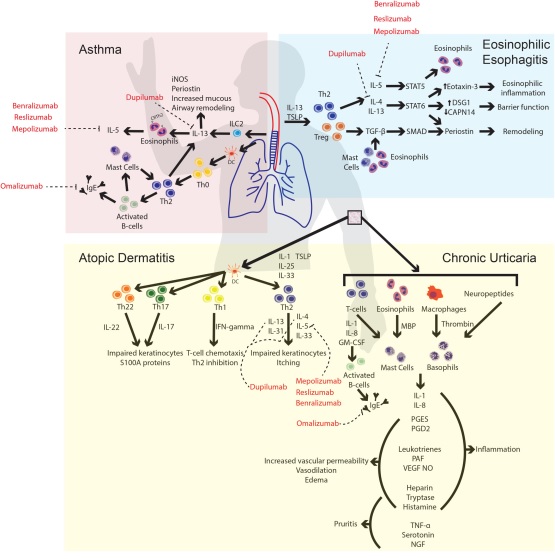Author: Rachel L. Chevalier, MD on October 16, 2023 
Allergic conditions such as asthma, chronic urticaria, atopic dermatitis, and eosinophilic esophagitis are widespread among the population. Often patients will have multiple concomitant allergic conditions, each requiring its own management strategy and specialist visits. During the last few decades, understanding of the pathways of these Th2 pathway driven diseases have led to development of multiple new monoclonal antibodies (mAb) targeted to specific cytokines to help control these diseases. Each iteration shows further specificity, decreasing the scope of immunosuppression and thus decreasing off target adverse effects.
Though many mAb have been evaluated and not all make it through to clinical success, breakthrough successes continue to change how we care for patients. For instance, dupilumab just celebrated its one-year anniversary as the first and still only US Food and Drug Administration approved treatment for eosinophilic esophagitis. Since dupilumab is also effective in eosinophilic asthma, atopic dermatitis, and chronic rhinosinusitis with nasal polyposis an entire cohort of patients are receiving benefit for multiple comorbidities with a single drug.
In a recent Clinical and Translational Science publication, Pandya et al. review each of these mAbs in turn, including their mechanisms of action, safety profile, and use in specific conditions. Walking through the efficacy data for each mAb demonstrates the progression of the science behind these treatments as well as the complicated, iterative road to clinical success.

The comment feature is locked by administrator.